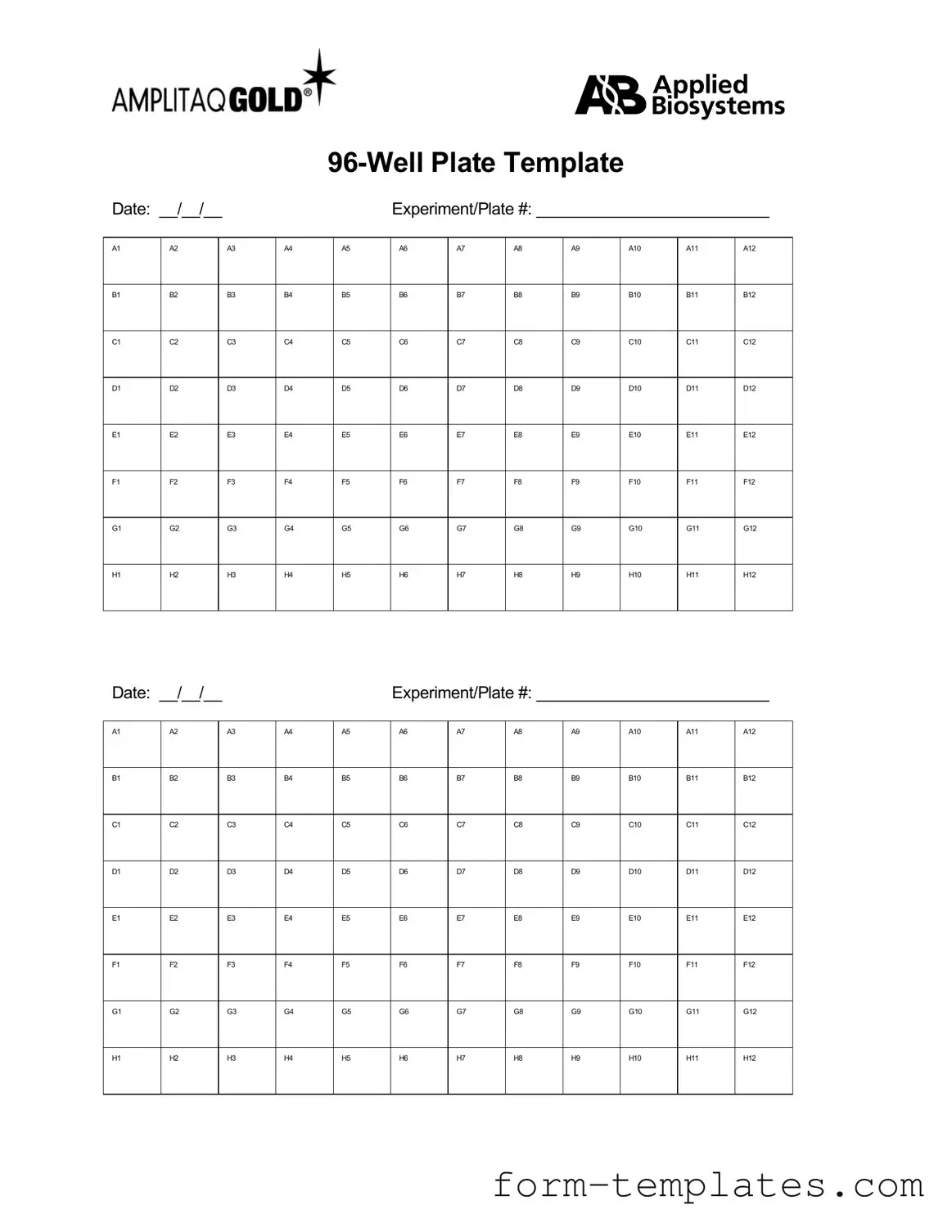The 96 Well form is commonly used in laboratory settings, particularly in biological and chemical research. This form helps researchers organize and record data from experiments that involve 96-well plates. Each well in the plate can hold a different sample, allowing for multiple tests to be conducted simultaneously. By using the form, researchers can track sample information, experimental conditions, and results efficiently.
Filling out the 96 Well form is straightforward. Here are some steps to guide you:
-
Start by entering the experiment title and date at the top of the form.
-
Label each column with the sample or reagent name that corresponds to the wells in the plate.
-
Record the specific conditions for each sample, such as concentration or temperature, in the designated sections.
-
As you conduct your experiment, document any observations or results in the appropriate spaces.
-
Double-check your entries for accuracy before finalizing the form.
Ensuring clarity and precision in your entries will make data analysis much easier later on.
Yes, the 96 Well form is versatile and can be adapted for various types of experiments. Whether you are conducting enzyme assays, cell culture experiments, or PCR tests, this form can be tailored to fit your needs. Just be sure to modify the sections to reflect the specific parameters of your experiment. This flexibility makes it a valuable tool across many scientific disciplines.
Many laboratories and institutions offer digital versions of the 96 Well form. These electronic forms can often be filled out on a computer or tablet, making data entry more efficient. Some digital formats even allow for automatic calculations and data analysis, streamlining the research process. Check with your lab or institution to see if a digital version is available for your use.
Mistakes can happen, and it's important to address them properly. If you notice an error, follow these steps:
-
Strike through the incorrect entry with a single line to maintain readability.
-
Write the correct information next to it, ensuring it is clear and legible.
-
Initial and date the correction to provide a record of the change.
By handling mistakes this way, you maintain the integrity of your data while ensuring that your records remain accurate.

